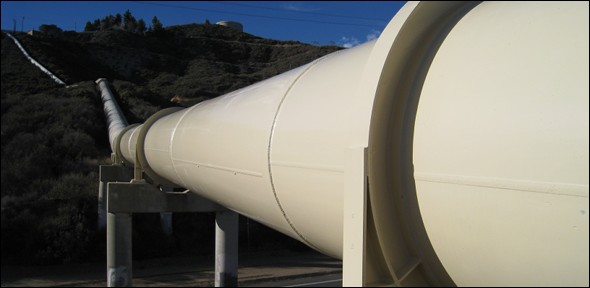Cap Federal Spending, But Do It Smartly
 Recently the Wall Street Journal reported that Democratic presidential candidate Senator Bernie Sanders has proposed a staggering $18 trillion in new federal spending — a 37 percent increase above what Washington is currently projected to spend over the next decade — even as Washington continues to run half-trillion-dollar budget deficits.
Recently the Wall Street Journal reported that Democratic presidential candidate Senator Bernie Sanders has proposed a staggering $18 trillion in new federal spending — a 37 percent increase above what Washington is currently projected to spend over the next decade — even as Washington continues to run half-trillion-dollar budget deficits.
Sanders’s proposals might better be termed the Bankrupt America plan. It would balloon Washington spending to 30 percent of GDP from its current 20 percent, creating a massive federal government matched in size only during World War II.
Most important, Sanders’s spending blowout would neither strengthen the U.S. economy nor create new private-sector jobs. Just the opposite. Rightsizing the federal government has spurred private-sector jobs, most recently when, after it peaked during the 1981–82 recession, President Ronald Reagan launched an 18-year reduction of federal spending relative to GDP that helped to create 39 million new private-sector jobs — an increase of more than 50 percent — from 1983 to 2000.
The global boom in commodities fueled by a debt-financed infrastructure and real-estate bubble in China is over. Commodity exporters such as Brazil are in recession, and economic growth is slowing in Australia, Canada, Europe, and Japan. America must again take the lead in boosting global economic growth.
Congress’s latest effort at fiscal restraint — the Budget Control Act of 2011 — targeted the one-third of federal spending that goes for discretionary programs. This act has helped to shrink Washington’s budget deficit by two-thirds and shave Washington’s spending by a significant three percentage points of GDP. Indeed, federal spending was actually $97 billion lower in 2014 than in 2011. To its credit, Congress recently enacted the first entitlement reform in two decades, which reduces the unfunded liabilities of Medicare by nearly $3 trillion. That’s progress.
Unfortunately, the Congressional Budget Office projects that federal spending for 2015 will still total 20.6 percent of GDP. Moreover, the Budget Control Act does not address entitlements. And without common-sense reforms, the massive uncontrolled growth in entitlements will leave America with a bleak fiscal future.
Congress must build on the success of the Budget Control Act. We need smarter, 21st-century budget guardrails that would gradually trim the size of Washington in order to spur private investment, create jobs, and boost the income of hard-working Americans on Main Street.
The upcoming fight over the federal debt limit gives Congress an opportunity to think smartly and act boldly by enacting a responsible spending cap that limits federal spending in relation to the size of our economy. The Maximizing America’s Prosperity Act of 2015 (MAP) would cap federal primary spending (which includes both discretionary and entitlement spending) as a percentage of potential GDP. Under MAP, primary spending would gradually decline from 19 percent of potential GDP in fiscal year 2016 to 16 percent of potential GDP over ten years.
Dan Mitchell of the Cato Institute explained that MAP is a very prudent approach similar to the “debt brake” that has successfully capped the growth of government spending in Switzerland. Kevin Hassett of the American Enterprise Institute described MAP as “the most comprehensive and well-conceived plan ever to reduce the size of the federal government.”
Why cap primary spending rather than total spending? Because it holds Congress to account for what it can control. The current Congress can control primary spending through appropriations and authorization laws. However, the current Congress cannot control interest spending because it is a function of the monetary-policy decisions of the Federal Reserve and the collective tax and spending decisions of past Congresses.
Capping primary spending instead of total spending eliminates two budget gimmicks. Under the terms of the MAP Act, future Congresses could not use lower interest rates to boost spending on discretionary and entitlement programs, and future Congresses could not count a tax increase as lower total spending because of the reduction in projected interest payments.
MAP does not ignore interest spending. When fully implemented, the cap on primary spending is set low enough so that the federal budget, including interest, would be balanced in most years.
Using the credible metric of potential GDP — the size of our economy at full employment without inflation — provides a more stable path for federal spending over time. Potential GDP eliminates the business-cycle fluctuations in GDP, which could lead to federal spending blowouts in boom years and politically unsustainable cuts during recessions.
For perspective, primary spending averaged 16.4 percent of potential GDP during the Clinton administration. The second half of the 1990s was a great period of economic prosperity and balanced budgets. Gradually reducing primary spending to 16 percent of potential GDP as proposed in MAP would eliminate the fear of a future fiscal crisis, boost confidence, and stimulate new business investment that drives private-sector job growth.
If we want a strong, prosperous America, we should reject Sanders’s plan for a federal spending spree, which would reduce business investment, slow job creation, and keep household income stagnant. Right-sizing the federal government is the better path to economic growth.








